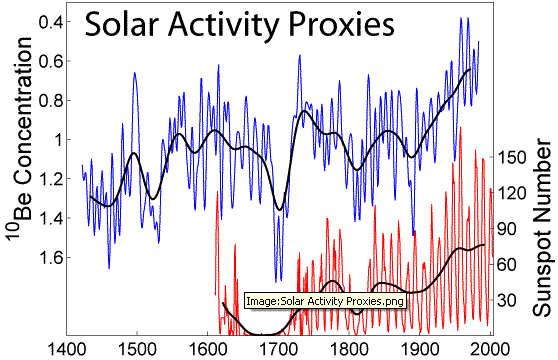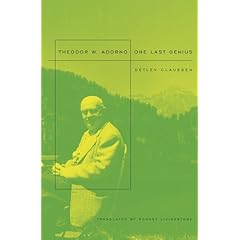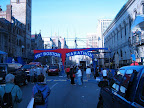
Most stars are variable. Their large variability in total luminosity (watts of output, summed over all wavelengths of electromagnetic radiation) is often due to internal heat cycles, similar to the Earth's internal climate cycles, but on a far grander scale. (Stars are thousands of times bigger than the Earth.) Another, less dramatic but still important, form of variability is due to stellar magnetic fields and magnetic cycles. The Sun is a variable star of this magnetic type. Right now, it is unusually stable compared to similar stars with similar magnetism. But that was probably different in the not-too-distant past - and almost certainly will be different in the not-too-distant future. It's essential to realize that the Earth's climate is not a closed system, but mingles high above our heads with various emissions (electromagnetic radiation, magnetic fields, and charged plamsa) from Sun.
Time scales of climate change. The climate cycles in
a previous posting were multiannual and multidecadal, observed by modern scientists with modern instruments. But the paleoclimate record, embodied in proxies such as sea corals, tree rings, gas bubbles trapped in bogs and ice, and much more along the same lines, shows clear signs of longer-term cycles. Historical records made before the arrival of modern scientific instruments in the 19th century are also of value here. A thousand years ago, grapes grew in Britain and southern Greenland was pretty hospitable - it wasn't all just Viking propaganda :)

If we zoom out to the time before the rise of civilization or modern humans, we come to the time scale of the Ice Ages, running from tens of thousands to tens of millions of years. Previous postings (
here and
here) already discussed the Ice Ages and how they're controlled by a combination of astronomical cycles and movements of the continents. The astronomical part controls the
timing of the Ice Ages; and the continental positions and the related poleward ocean currents, their
intensity. Infrared-active gases like carbon dioxide and methane are minor to unimportant.
Between the one-to-10-year and the 10,000-to-10-million-year range, we have three "log decades" or "powers of ten" (10
1 to 10
4 years). There are probably subharmonics of the internal Earth climate cycles lurking here, with lower frequencies and longer periods.
 The central importance of the Sun.
The central importance of the Sun. But when you think "global climate," the
first thing that ought to come to mind is the Sun, not something humans are doing. The Sun is the one major influence that affects all of climate everywhere simultaneously. The paleoclimate proxy evidence on this score is very strong.
The mother of all ups-and-downs on centennial and millennial time scales is
solar magnetism. This related bundle of cycles has so many impacts on the solar system and the Earth, it would take a
whole book to spell them all out, and just at a
fairly non-technical level. Here's a whirlwind tour in one large posting.
Solar magnetism: Its effects on the Earth. The Sun's magnetism varies on a roughly 22-year complete cycle, with shorter-term irregular "flickerings" and longer-term, low-frequency subharmonics. The most dramatic effects people see on Earth are a result of the "space weather" that solar magnetism stirs up. At solar magnetic maxima, intense solar storms slam large ejections of rarefied, magnetized hot plasma into the Earth's own magnetic field, setting off upper-atmosphere auroras in polar regions and messing with electrical and electronic equipment worldwide. Astronauts have to go back inside or just come home, to protect themselves from the intense flux of solar plasma. Anything depending on terrestrial magnetism can be knocked a-kilter: humans (if we use a compass), and birds and dolphins (they have small magnets in their brains for navigation).
The last solar maximum occurred in 2000; the one before, in 1989. You can learn more about space weather
here.
Solar magnetism: Its origin and nature. Most stars have significant magnetic fields that arise from the circulation of charged particles in their rotating hot plasmas. (The Sun rotates about once in 26 days.) For reasons still not completely clear, the Sun's magnetism, which is roughly laid out like a bar magnet (north and south poles), switches magnetic polarity roughly every 9.5-11 years and completes a cycle every 19-22 years. The hot solar plasma interacts with this magnetic field near the surface, becoming entrained in the magnetic field lines. In the outermost (transparent) solar atmosphere, the plasma pressure is not fully balanced against gravity, and a hot, thin plasma
solar wind blows outward, taking magnetic field lines with it. Its speed and particle flux are 400 to 750 kilometers per second and about 100 billion particles (charged ions) per second per squared centimeter. The density is typically 5-10 particles per cubic centimeter, although in a massive eruption, the density and flux can be 10 times their "normal" values. This is pretty rarefied compared to our environment, but still far from a true vacuum.

The Earth's own magnetic field (
magnetosphere) generally protects us from the solar wind - but not entirely. When the Sun switches magnetic polarity, the solar wind is interrupted repeatedly by massive ejections of hot, magnetized plasma. These mainly occur near the solar rotational equator, which is close to the Earth's orbital plane. The Earth is subject to some of these magnetic plasma ejections. During this phase of the cycle, the strength of the Sun's magnetic field near the surface reaches a maximum.
Solar magnetism: More stuff happens. The most visible result of this intensified solar magnetism near the surface is
sunspots. Other stars, rotating and magnetized, have them as well, and also exhibit a periodic rise and fall in their magnetism and starspots. Sunspots are places where the field near the surface pokes out, forming partial field loops that connect paired spots (one N, the other S, polarity).
The best proxy for solar magnetic intensity, it turns out, is not the number of sunspots, but a combination of the
total area the spots cover and the
magnetic cycle period length. Strangely, while the centers of the spots are indeed darker than the surrounding solar surface, the areas near the spots (the
faculae) are actually brighter. The net result is that, for our Sun, solar magnetic maximum is also a solar brightness maximum; solar magnetic minimum, a brightness minimum. Comparing one cycle to another, a solar maximum is stronger if the associated cycle is shorter; weaker if longer.*
Solar brightness, total and differential. The Earth's upper atmosphere. The solar brightness has varied by somewhat less than two-tenths of percent over recent solar cycles. Using a rule from radiation thermodynamics, the surface temperature of the Earth should, naively speaking and ignoring any complicating mechanisms, vary as ΔT/T = ΔB/(4B). So a few tenths of a percent in solar brightness B (ΔB/B ~ 0.002) might give rise to about a tenth of a percent variation in the Earth's surface temperature. For T(E) = 288
oK, that's ΔT(E) ~ 0.15
oK, small but not negligible. It's a factor of a few off from
predictions of semi-realistic "global warming" scenarios that include the effect of enhanced clouds and convection. And indeed, Fourier-analyzing temperature variability does result in a harmonic spectrum that includes, among other features, a suspicious peaks near 1/11 inverse years of frequency. Years with solar maxima do tend to be hot and dry.
And Nature has a further trick up her sleeve. While the solar total luminosity doesn't vary much, the ultraviolet (UV) part of the spectrum varies disproportionately over the solar cycle, by 10% or more, with "strong" solar maxima showing larger increases in solar UV. Its presence or absence over the daily cycle expands or shrinks the Earth's upper atmosphere and changes the
ozone-rich boundary between the upper and lower atmospheres. This daily effect has been measured for over a century by its impact on surface air pressure. (See
this old posting.) Without a fairly exact understanding of vertical heat transport in the Earth's atmosphere, it's hard to infer from this daily pressure variation the corresponding variation in the atmosphere's temperature distribution. Naively, it should be roughly 0.4
oK, and there are good reasons to think (see below) that the variation is enhanced by a factor of two to three.

What this means for the
11-year solar cycle is currently the subject of intense debate and investigation. Comparing our star to others similar to it, it's not unreasonable to think that it can exhibit (over centuries and millennia) larger brightness variations than seen in the last 30 years of satellite measurements. Combined with enhancement within the atmosphere (especially from the lowering and raising of the ozone "lid" on the lower atmosphere), there's a clear implication that even small variations in solar brightness can have noticeable effects on the Earth's surface.
The solar wind and cosmic rays: Maybe it does something to the clouds. An idea more difficult to evaluate is rooted in another side-effect of the solar wind. The wind strengthens during solar maximum and weakens at solar minimum. Outside the Sun's magnetic sphere of influence (the
heliosphere), which extends out to roughly 90 Earth orbital radii (8 billion miles or so from the Sun), is the interstellar medium and a very rarefied flux of extremely energetic charged particles called cosmic rays. (More rarefied than the solar wind itself: the cosmic rays are one particle per cubic centimeter). They're mainly protons (hydrogen nuclei). The solar wind keeps many of them out of the inner solar system, but not all.**
Most of Earth's clouds form, not by spontaneous condensation of pure water droplets (which is a pretty slow process), but by
nucleation, water droplets glomming on to other particles floating in the atmosphere, mainly dust and aerosols. This catalyzed or
induced condensation is much easier than for pure water droplets and the main reason we have clouds.
What does that have to do with cosmic rays? When they hit the Earth's upper atmosphere heading toward the surface, they leave behind a trail of ionization, temporarily charged atoms - air molecules that are temporarily stripped of some electrons. Such trails are perfect nucleation sites for water droplets or crystals to form.
When the solar wind is weaker, more cosmic rays get through and (maybe!) induce more water condensation in Earth's atmosphere: more clouds, less sunlight, lower surface temperatures. When the solar wind is stronger, the opposite might happen.

The ups and downs of the flux of cosmic rays hitting the Earth's atmosphere is established, for the era prior to scientific instruments, with the formation and deposition of
beryllium-10 and
carbon-14 in ice and organic material. These radioactive variants (isotopes) of the standard elements (beryllium-9 and carbon-12) are tracers of the strength of the cosmic rays that produced them.
The Sun's variability affects the Earth's climate. We can summarize all of these effects in a little table.
Sol Sunspots Solar brightness Cosmic rays Clouds T(E)
magnetism (total area) (total and UV) at Earth
-------------------------------------------------------------------------------
Up Up Up Down Down (?) Up
Down Down Down Up Up (?) Down
The evidence for significant solar modulation of Earth's climate is indirect but compelling. Every index of climate (temperature, pressure, clouds, and rainfall) shows a component in its variability with the solar magnetic cycle period (9.5-11 years). When we consider the
more irregular flickerings of solar brightness over shorter time scales (months to a few years), the connection can be brought down to the level of specific events and timings. Statistical tests of significance consistently yield correlated variability between solar and climate variation at 50-80%.†

And there's compelling history too. Paleoclimate records exhibit a tight connection between cosmic rays and climate proxies. The solar magnetic cycle is itself modulated over much longer times by irregular waves of weaker and stronger solar maxima. The Sun was exceptionally active during the Medieval Warm Period (c. 800-1300) and exceptionally weak during the Little Ice Age (c. 1300-1650), with reported sunspots and reconstructed cosmic ray fluxes correlated in just the way expected from the little table above.††
And where's "consensus" science? You might think this would be an area of active research, with lots of scientists swarming all over it. There has been a lot of work on the Sun-Earth connection since it was first suspected in the 19th century. Interest faded in the 20th century, at least until the 1970s, with the arrival of satellites and the first successful paleoclimate reconstructions.
But there's not enough research in this area. From the point of view of how the sciences are presently divided up, it's highly interdisciplinary and causes suspicion because it crosses so many academic boundaries. And in the last 20 years, of course, we can't escape the bad effect the "global warming" hysteria has had in discouraging scientists and redirecting research funding away from such work. Citing early, limited, and poorly executed statistical studies, the IPCC has repeatedly dismissed the connection, for no good scientific reason. The scientific annexes of the IPCC reports do mention the connection and regard it as important, "poorly understood," and deserving of more research. But that sound scientific advice has been ignored: it's not "with the program."
See
here,
here, and
here for some recent developments in the saga of solar variability affecting - not the Earth - but Mars and Neptune. No industrialization out there: another demonstration of how little we understand climate.
ReferencesCaution with some of the amateur Web sites out there on this topic. Opposing the fake "consensus" theory of "global warming" due to (the misnamed) "greenhouse" gases, their heart is often in the right place. But they're often sloppy with their science. Much more reliable are the three climate blogs linked at right in the blog roll.
= D. V. Hoyt
and K. H. Schatten,
The Role of the Sun in Climate Change, Oxford U. Press, 1997.
= B. Fagan,
The Little Ice Age, Basic Books, 2001.
= W. W.-H. Soon and S. Yaskell,
The Maunder Minimum, World Scientific, 2004.
= S. Baliunas, in
Shattered Consensus, P. J. Michaels, ed., Rowman & Littlefield/George C. Marshall Institute, 2005. Short, semi-technical survey of current knowledge. Stresses both the evident empirical reality of solar modulation of climate and our poor theoretical understanding of it. The scientific annexes of the IPCC reports are not that different in spirit.
= S. F. Singer and D. Avery,
Unstoppable Global Warming, Rowman and Littlefield, 2006. Identifies the MWP and LIA as part of a long-period (1500-year) modulation of the solar cycle attested by hundreds of thousands of years of climate proxies in ice core samples.
= Streaming video of a talk on solar physics basics by astrophysicist Kelly Korreck at the Harvard-Smithsonian Center for Astrophysics, February 2008 (see this
page).
---
* It can be, and is, different with other stars. In some stars, more spots lower the brightness, overall. Their magnetic cycle periods are also not rigidly constant, but vary within a range, from one cycle to the next.
Sun-like stars with similar magnetism typically show brightness variations larger than currently seen on the Sun, a few tenths of a percent, up to about a percent.
** To clear up a frequent confusion: scientists today refer to these galactic cosmic rays as "the" cosmic rays. They have individual particle energies in the 100s of millions of electron volts (100s MeV) to a few billion electron volts (GeV). They probably originate from our Galaxy's cumulative history of supernova explosions.
In older publications, the solar wind particle flux was sometimes referred to as "cosmic rays" as well. These particles have much lower (although still pretty large) energies, roughly 10 to 1000 electron volts (10 eV to 1 keV). These are typical of the energetic X-ray emissions from atoms, and the particles are accelerated by mechanisms that transfer comparable energies. A typical atomic transformation in everyday chemical reactions is one to 10 electron volts (1 to 10 eV), by comparison, up to a thousand times smaller than the solar particles and a million to a billion times smaller than the galactic particles.
† That is, both phase and frequency information are available and are closely correlated, not just frequency information. See
Scafetta and West (PDF).
Wavelets (a mix of time- and frequency-domain analysis) are a better way to analyze this than pure
Fourier analysis. Typically significance is tested with nonparametric methods like principal component analysis.
†† Very large sunspots were noted on the Sun's surface at that time by Chinese astronomers who, unlike their European counterparts, were not prejudiced into thinking that a heavenly body has to be "perfect." Without telescopes, they observed the sunspots at sunrise through thin clouds. Earlier naked-eye sitings date back to antiquity.
The rise of telescopic astronomy in western Europe in the 1600s marked the beginning of more controlled observation of the Sun. But as luck would have it, that happened in the later part of the Maunder Minimum, a dearth of sunspots - and very cold Earth temperatures (Little Ice Age). Over the last 450 years, the Earth has been recovering from the LIA, although the recovery has been interrupted by several, less severe, sunspot minima.
Ironically, there has been some resistance among climatologists to accepting the fact that the Sun is a variable star. The Sun's input of electromagnetic radiation to the Earth's climate is sometimes called the "solar constant" (about 1370 watts per square meter). Discovering that the "solar constant" isn't really constant was like discovering in the 1600s that the Sun isn't an unblemished celestial orb.
Such language confusion, like the use of climate "anomaly" and "forcing" - which have precise technical meanings and don't necessarily mean something bad is happening - is one cause of climate hysteria. Platonism has been dying a long time in the sciences of the West, and it's sustained by both popular and elite misunderstandings of this type.
Labels: astronomy/space, climate, cycles, Fourier, global warming, paleoclimate, polar, radiation, sun, thermodynamics






















